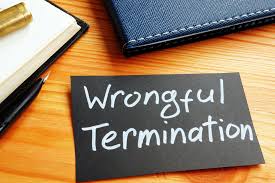Being fired is hard enough—but when you believe it was illegal, the path forward can feel overwhelming. If you’ve been wrongfully terminated in Maryland, you may be wondering: What happens next? How do I file a lawsuit? Do I need a lawyer? What are the chances of winning?
This post walks you through the entire process of filing a wrongful termination lawsuit in Maryland—from your first steps after being fired to how a case is resolved, whether through settlement or trial. While every case is unique, the legal journey tends to follow a familiar pattern.
Step 1: Identify Whether the Firing Was Illegal
Not every unfair or unjust firing is illegal. Maryland is an at-will employment state, meaning your employer can terminate you at any time, for nearly any reason—or no reason at all.
However, if you were fired for any of the following reasons, you may have grounds for a lawsuit:
- Discrimination (based on race, gender, age, disability, religion, etc.)
- Retaliation (for reporting misconduct, requesting accommodations, or filing complaints)
- Whistleblowing (reporting illegal or unethical conduct)
- Violation of an employment contract
- Violation of public policy (e.g. firing for refusing to break the law)
If your firing fits into one of these categories, the next steps will help you prepare a legal claim.
Step 2: Gather Evidence
Successful wrongful termination claims rely on evidence. Start collecting the following:
- A written termination notice (if provided)
- Emails, messages, or performance reviews
- Copies of your employment contract or employee handbook
- Notes or documentation of harassment, retaliation, or complaints
- A detailed timeline of events: when you reported issues, when retaliation began, when you were fired
The more you can document, the stronger your case will be.
Step 3: Consult an Employment Attorney
Wrongful termination cases are complex. A qualified employment lawyer in Maryland can help you:
- Determine if your case is legally actionable
- Calculate potential damages
- Advise whether to pursue a complaint through a state or federal agency
- Handle negotiations, filings, and deadlines on your behalf
Most employment attorneys offer free consultations, and many work on a contingency fee basis, meaning they only get paid if you win or settle your case.
Step 4: File an Administrative Complaint (If Required)
Before you can file a lawsuit for discrimination or retaliation, you must first file a Charge of Discrimination with either:
- The Equal Employment Opportunity Commission (EEOC) (federal), or
- The Maryland Commission on Civil Rights (MCCR) (state)
This step is mandatory for claims involving:
- Race, sex, religion, national origin
- Disability or age
- Retaliation for protected activity
You must typically file within 180 to 300 days of the termination, depending on which agency and laws apply.
These agencies may:
- Investigate your claim
- Offer mediation
- Issue a Right to Sue letter (allowing you to proceed with a lawsuit)
Step 5: Filing the Lawsuit
Once you receive a Right to Sue letter (or if your claim doesn’t require it), your attorney can file a lawsuit in Maryland state court or federal court, depending on the case.
Your lawsuit will include:
- A complaint outlining your legal claims
- A request for damages (e.g., lost wages, emotional distress)
- Identification of the employer as the defendant
The employer (defendant) will then file a response—either denying the allegations or attempting to have the case dismissed.
Step 6: Discovery and Pre-Trial Phase
This is the stage where both sides gather evidence and build their case. It includes:
- Depositions (interviews under oath)
- Interrogatories (written questions)
- Requests for documents (e.g., HR records, internal emails)
This phase can last several months, and it’s often where cases are won or lost. Strong documentation and consistent timelines can greatly improve your position.
Step 7: Settlement Negotiations
Most wrongful termination cases settle before going to trial. Your attorney and the employer’s legal team may negotiate a settlement based on:
- Lost wages (back pay and front pay)
- Compensation for emotional distress
- Legal fees
- Non-monetary terms (e.g., a neutral job reference or removal of negative records)
If a fair settlement can’t be reached, your case proceeds to trial.
Step 8: Trial
If your case goes to trial, a judge or jury will hear the evidence and decide the outcome. Trials can take days or weeks, depending on complexity.
If you win, you may be awarded:
- Compensatory damages (lost wages, benefits, etc.)
- Emotional distress damages
- Punitive damages (in egregious cases)
- Attorney’s fees and court costs
If you lose, you may not owe anything (especially if your attorney worked on contingency), but it’s possible you’ll need to cover some costs depending on the case.
How Long Does It Take?
From the time you’re fired to a final outcome, a wrongful termination case can take 6 months to 2 years, depending on:
- Whether the case settles or goes to trial
- The court’s schedule
- The complexity of your claim
A skilled attorney can help move things efficiently and negotiate favorable terms early in the process.
Final Thoughts
Filing a wrongful termination lawsuit in Maryland is a serious step—but it may be the right one if your employer broke the law. Understanding what to expect can help you feel more confident and prepared.
If you believe you were fired for an illegal reason, don’t wait. The sooner you gather evidence and speak with an attorney, the better your chances of recovering the compensation—and the justice—you deserve. We recommend wrongful termination lawyers maryland.




